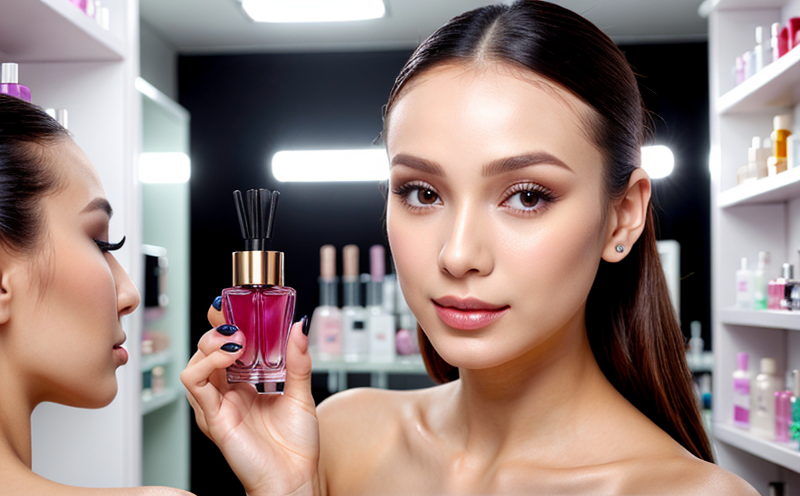Sensory Evaluation Testing of Cosmetic Fragrances
In the highly competitive cosmetic industry, sensory evaluation testing plays a critical role in ensuring that fragrance and perfume formulations meet both regulatory standards and consumer expectations. Sensory evaluation is a qualitative assessment method used to evaluate the odor characteristics of cosmetic products. This process involves trained evaluators who use their senses—specifically smell and taste (for non-aqueous products)—to assess attributes such as aroma, intensity, longevity, and harmony.
The sensory evaluation test is particularly important in the cosmetic industry because it helps to ensure that the product's fragrance meets quality standards set by various regulatory bodies. For instance, in Europe, the EU Cosmetics Regulation ensures that all products are safe, effective, and correctly labeled. In the United States, the FDA also mandates that cosmetics comply with certain safety requirements.
During sensory evaluation testing, evaluators typically use a standardized method to describe their perceptions of fragrance attributes. This can include notes on top notes (the initial scent), middle notes (notes that develop after the top notes), and base notes (long-lasting scents). Evaluators may also assess other characteristics such as sillage (fragrance trail) and dry-down (the final scent impression).
The process of sensory evaluation testing is highly regulated. It involves trained evaluators who follow a specific protocol to ensure consistency and reliability. The evaluators are typically selected based on their experience, training, and sensitivity to the attributes being evaluated.
One key standard for sensory evaluation in cosmetics is ISO 7173-2:2019 "Cosmetics — Sensory analysis of fragrance compounds and mixtures — Part 2: Evaluation methods." This international standard provides guidelines on how to conduct sensory evaluations, including the selection of evaluators, the preparation of samples, and the recording of results.
| Standard Name | Description |
|---|---|
| ISO 7173-2:2019 | Cosmetics — Sensory analysis of fragrance compounds and mixtures — Part 2: Evaluation methods |
| ASTM D6841-15 | Standard Practice for Conducting Consumer Sensory Evaluations of Aromatics in Cosmetics |
Applied Standards
The sensory evaluation testing process is governed by several international standards that ensure the accuracy and reliability of the results. The most commonly used standard in this context is ISO 7173-2:2019, which provides a framework for conducting sensory evaluations on fragrance compounds and mixtures.
Another important standard is ASTM D6841-15, which outlines best practices for consumer sensory evaluations of aromatics in cosmetics. This standard ensures that the evaluation process is consistent across different laboratories and evaluators. By adhering to these standards, labs can ensure that their results are both accurate and repeatable.
Why Choose This Test
The sensory evaluation test offers several advantages for cosmetic companies. Firstly, it allows for the identification of any discrepancies between the intended fragrance profile and the actual product. Secondly, it helps to ensure that the product meets quality standards set by regulatory bodies such as the EU Cosmetics Regulation and the FDA.
Thirdly, sensory evaluation testing provides valuable insights into consumer preferences. By understanding how consumers perceive a particular fragrance, cosmetic companies can make informed decisions about product development and marketing strategies. Finally, sensory evaluation testing helps to ensure that products are safe for use by the general public.
Quality and Reliability Assurance
- The use of trained evaluators ensures consistent results across different samples.
- Adherence to international standards such as ISO 7173-2:2019 guarantees reliability.
- Regular calibration and maintenance of sensory evaluation equipment ensure accuracy.
- Inclusion of both top, middle, and base notes allows for a comprehensive analysis of the fragrance profile.





